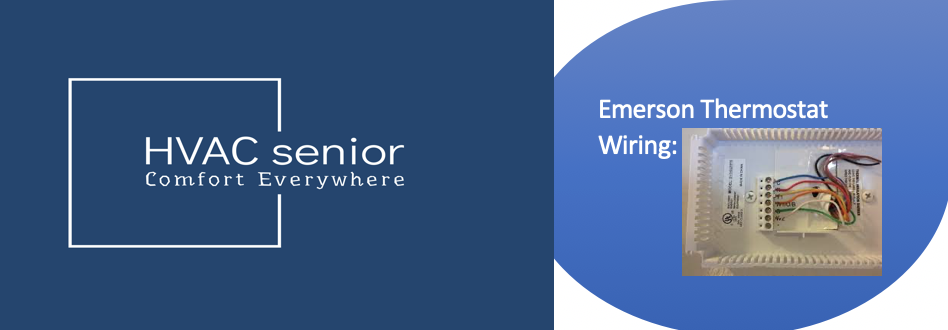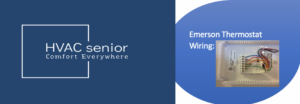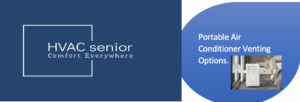Air Conditioner Keeps Turning On & Off ? Find out why and fix it.
Your Air Conditioner Keeps Turning On and Off,is an obvious sign of an underlying problem rather than the problem itself. This phenomenon, also referred to as “short cycling,” is a common issue with air conditioning systems.
When your air conditioner starts and ends its cooling cycle too frequently, this is known as short cycling, and it can have a number of negative effects.
In addition to decreasing the system’s overall effectiveness, it also puts an excessive amount of stress on its parts, possibly causing premature wear and tear.
The occupants may also experience pain as a result of the frequent cycling because the required temperature is not effectively maintained.
Related Post>>>>Air Conditioner Leaking Freon.
The Air Conditioner Keeps Turning On and Off because of problems like a broken thermostat, clogged air filters, refrigerant leaks, or poorly suited equipment.
You may ensure higher efficiency, extend the system’s lifespan, and create a more comfortable indoor atmosphere by identifying and fixing the underlying issue that is causing your air conditioner to cycle frequently.
What is Short Cycling?
Short cycling in HVAC refers to a furnace or air conditioner frequently turning on and off, signaling a potential problem.
A typical AC cycle lasts between 15 and 20 minutes, however short cycling forces it to run every five minutes, placing strain on the system and increasing the chance of compressor failure if left unattended.
Let’s address some of the things that can cause your air conditioner to short cycle. As well as issues not related to short cycling but could also turn your air conditioner on and off.
Air Conditioner Keeps Turning On & Off.
1.The Location of Your Thermostat.
As the primary controller of your HVAC system, the thermostat determines when to turn on your air conditioner or furnace, so place it in a strategic location.
The optimal thermostat location should have been selected when your system was first installed, keeping it away from supply vents, direct sunlight, and appliances that emit heat.
By positioning it poorly, you risk sending out incorrect commands that cause equipment to shut down early.
Solution.
Consider returning your thermostat if you moved it from its original location. Alternately, arrange neighboring items differently to get rid of any obstructions to the thermostat’s operation.
2.Faulty Thermostat.
Equipment has a finite lifespan, and your air conditioner’s unpredictable cycling may be caused by a broken thermostat.
Solution.
Make the necessary checks. First, check to see if the batteries are in excellent shape; a voltage meter is ideal for a precise inspection.
Batteries that appear to be in working order occasionally may not have enough power.
Check the thermostat for any potential fuses as well. Replace it if found to be blown.
Last but not least, check the thermostat’s accuracy by mounting a thermometer close by. It’s time to get a new thermostat if the temperature being shown doesn’t match the thermometer’s reading.
3.Clogged Drain.
Because the float switch can’t get rid of too much humidity, it turns the air conditioner off when water levels become too high, which can result in brief cycling if a drain is plugged.
The cycle repeats as the AC resumes and the water slowly drains, simulating short cycling despite the AC’s actual state.
Solution.
Ensure the drainage pipe and/or tank of your air conditioner are free from obstructions.
Also read>>>>air conditioner makes whooshing noise.
4.Airflow Issues.
While clogged filters are a common culprit behind airflow problems, several other factors can impede your HVAC system’s air circulation and efficiency.
It’s essential to consider these factors to maintain optimal performance and comfort in your home.
- Blocked Air Vents: Ensure that both your return and supply vents are not obstructed. Sometimes, furniture may be placed against return air vents on walls, hindering proper airflow. Additionally, avoid fully closing supply vents, as this can disrupt the balanced air distribution throughout your home.
- Fan Inspection: The condition of your blower motor, responsible for circulating conditioned air throughout your home, can be affected by dirty air filters. When filters are clogged, the blower motor must work harder, potentially leading to malfunctions. If you suspect this, have your fan and blower motor inspected by a professional to ensure they are functioning correctly.
- Leaky Ducts: Check for any leaks or gaps in your ductwork. Excessive air escaping from your ducts can significantly hinder airflow, causing uneven heating or cooling in different areas of your home. Leaky ducts not only reduce system efficiency but also lead to increased energy bills. Sealing and insulating ducts can help rectify this issue, enhancing overall HVAC performance.
- Register and Grille Cleaning: Over time, registers and grilles can accumulate dust and debris, obstructing airflow. Regularly clean these components to ensure unobstructed air passage.
- Balancing the System: Sometimes, improper airflow is a result of an unbalanced HVAC system. Balancing involves adjusting the airflow to different parts of your home, ensuring consistent comfort levels in each room. A professional technician can assess and balance your system as needed.
- Regular Maintenance: Preventive maintenance is key to identifying and resolving airflow issues early. Schedule regular HVAC inspections and maintenance to address any potential problems and keep your system running smoothly.
By addressing these factors, you can maintain optimal airflow in your HVAC system, improve its efficiency, and ensure a more comfortable and energy-efficient home environment.
If you encounter persistent airflow problems, consider consulting a professional HVAC technician for a thorough assessment and appropriate solutions.
5.Refrigerant Leak.
It is impossible to exaggerate how important the evaporator coil is to the cooling process of your air conditioner.
The refrigerant that removes heat from the air within your home is kept in this coil. But when the coil’s refrigerant level drops too low, a serious problem occurs since the pressure drops along with it.
This decrease in pressure has a negative impact on how well your compressor, a crucial part of the cooling system, functions.
The low-pressure monitor is a safety feature found on the majority of compressors. When the pressure inside the system drops below a set threshold, this monitor is intended to activate.
In these circumstances, it starts the compressor’s automatic shutdown. The compressor is then resumed after this delay to give the pressure time to gradually increase to a safe level.
As a result of this procedure, your air conditioner may regularly cycle on and off in a repeating cycle known as “short cycling.”
Solution.
However, it’s crucial to emphasize that addressing low refrigerant levels is not a DIY task. Refrigerant is hazardous to handle without the proper expertise and equipment.
Consequently, rectifying this issue requires the intervention of a certified HVAC technician who possesses the necessary training and equipment to handle refrigerants safely and effectively.
To find the source of the refrigerant loss, a qualified expert will evaluate your air conditioning system in detail.
When a problem is discovered, they will take the proper action, which may involve finding and fixing leaks, recharging the refrigerant, and making sure the system runs at optimal pressure levels.
This expert technique is crucial for guaranteeing the safety and lifespan of your cooling system in addition to restoring the performance of your air conditioner.
As a result, it is essential to hire a skilled technician to handle any potential refrigerant-related problems in a safe and efficient manner.
Also read>>>>Air conditioner Keeps tripping Breaker.
6.Oversized Air Conditioner.
According to the temperature in your area, the size of your house, and other considerations, air conditioners are carefully sized.
Problems may occur if your AC was improperly sized during installation, for example, if it was too big for your house.
A larger AC may appear beneficial, however it may cause problems like short cycling, which is harmful for the following reasons:
- Increased Energy Costs: An oversized system cools your home too rapidly, causing it to frequently cycle on and off. This inefficiency results in higher energy bills.
- Elevated Breakdown Risk: Frequent cycling puts stress on your AC components, increasing the likelihood of system breakdowns and the need for costly repairs.
- Reduced Lifespan: Short cycling can significantly shorten the lifespan of your air conditioner, requiring premature replacement.
Solution.
Fortunately, controlling the power of an enormous AC is achievable by changing the fan speed.
The system can dehumidify the air more efficiently thanks to this small change, which decreases the AC’s BTU rating slightly and increases coil contact time.
For increased effectiveness and longevity, having your AC system correctly sized and adjusted by a professional is advised.
Frequently Asked Questions (FAQs)
Why does my air conditioner turn on and off frequently?
Answer: Your air conditioner may be short cycling due to various reasons, such as improper sizing, dirty filters, low refrigerant levels, or a malfunctioning thermostat. These issues can disrupt the cooling cycle and cause frequent on-off cycles.
Can an oversized air conditioner lead to short cycling?
Answer: Yes, an oversized AC can indeed cause short cycling. It cools your home too quickly, leading to frequent cycles that increase energy bills, raise the risk of breakdowns, and shorten the system’s lifespan.
How can I prevent short cycling in my air conditioner?
Answer: To prevent short cycling, ensure proper AC sizing during installation, clean or replace dirty air filters regularly, maintain a well-positioned thermostat, and address refrigerant issues promptly. Additionally, consult a professional for proper fan speed adjustments if your system is oversized.
What are the consequences of short cycling?
Answer: Short cycling can result in higher energy costs, increased wear and tear on your AC components, a greater risk of breakdowns, and a shorter overall lifespan for your air conditioner.
Can I fix a short cycling issue on my own?
Answer: Some basic checks, like changing filters or clearing obstructions around vents, can be done by homeowners. However, addressing complex issues like refrigerant levels, thermostat malfunctions, or sizing problems requires the expertise of a certified HVAC technician.
Why is it important to maintain proper humidity levels in my home?
Answer: Maintaining proper humidity levels is crucial for comfort and indoor air quality. If your AC short cycles due to humidity issues, it may not dehumidify effectively, leading to discomfort and potential mold or moisture problems.
How can I determine if my AC is properly sized for my home?
Answer: Consulting an HVAC professional is the most accurate way to determine if your AC is properly sized. They can perform a load calculation to match the system’s capacity with your home’s specific needs, ensuring efficient and consistent cooling.
Also read>>>>Rheem Air Conditioner Problems.
Conclusion.
As you can see from the above, it’s often something simple—and relatively cheap—that’s causing your Air Conditioner Keeps Turning On & Off. However, there are a few potentially expensive issues as well.
To recap, here are the things to check:
- Location of your thermostat
- Faulty thermostat
- Dirty air filters
- Other airflow issues
- Refrigerant leak
- Oversized air conditioner
Hopefully, the answer to your problem is one of the cheaper options, one that will have your air conditioner running properly again in no time.
Watch More:









